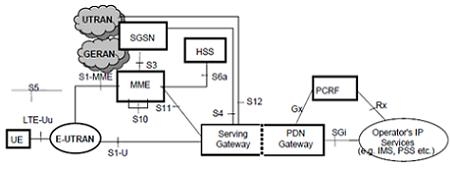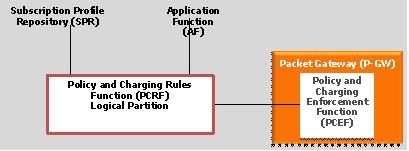Technical Library
Long Term Evolution (LTE)
LTE is an evolutionary path for GSM carriers that began with implementation of 2.5G GSM/GPRS networks and has evolved to encompass the worldwide implementation of 3G UMTS/HSPA networks. Today approximately 90% of all worldwide wireless subscribers use GSM-compatible devices.
The cellular wireless industry is at a key phase in its evolutionary path from today's third-generation systems toward next-generation (4G) systems. Future GSM specifications are expected to include complex signal processing techniques such as multiple-input multiple-output (MIMO) along with new radio technologies such as orthogonal frequency-division multiple access (OFDMA) and multicarrier code division multiple access (MC-CDMA). These advances are key to achieving target throughputs in excess of 100 Mbps.
AT&T has announced the deployment of Long Term Evolution (LTE) technology. LTE is the 4G standard defined by the Third Generation Partnership Project (3GPP), which previously defined 2.5G GPRS/EDGE and 3G HSPA. The 4G LTE standards are expected to significantly improve end-user throughput, performance, and overall user experience. LTE data transfer rates will be comparable to wireline broadband connections with the added benefit of mobility.
LTE is composed of two major elements:
- A new radio access network that is optimized for an all IP-based traffic network.
- An evolutionary core network architecture called Service Architecture Evolution (SAE) which is also known as Evolved Packet Core (EPC).
LTE is an evolutionary path for GSM carriers that began with implementation of 2.5G GSM/GPRS networks and has evolved to encompass the worldwide implementation of 3G HSPA networks. Today approximately 90% of all worldwide wireless subscribers use GSM-compatible devices.
LTE promises significant improvement in network performance and operational efficiencies. Since it will be an all-IP packet-based network, it will enable operators to potentially reduce the number of network elements between subscribers and the Internet.
LTE will allow carriers such as AT&T to better allocate spectrum and to take advantage of improved propagation characteristics. At the same time, LTE is targeted to enable high-performing multimedia applications, and increase network capacity.
For subscribers, LTE offers three principal benefits:
- Higher speeds and support of "full mobile broadband." LTE will allow subscribers to run applications and services that are associated today with wireline broadband networks.
- Improved coverage and service offerings. LTE will be offered in the 700 MHz spectrum, which has improved penetration and coverage.
- Improved data connectivity. New connectivity peripherals will enhance customers' ability to connect a larger variety of devices to the higher-performing mobile broadband network.
LTE Performance
LTE promises significant improvement in network performance and operational efficiencies. It is targeted to provide higher data rates, improved spectral efficiency, and reduced latency. The performance requirements are specified in 3GPP Technical Report 25.913. Following are some selected performance requirements for an LTE network from 3GPP TR 125 913, 3G Americas.
- Instantaneous downlink peak data rate of 100 Mb/s within a 20 MHz downlink spectrum allocation (5bps/Hz). Peak theoretical data rates using 4x4 MIMO configurations of 326 Mbps are possible. Average user throughput per MHz, 3 to 4 times Release 6 HSDPA.
- Instantaneous uplink peak data rate of 50 Mb/s (2.5 bps/Hz) within a 20 MHz uplink spectrum allocation. Peak theoretical data rate of 86.4 Mbps within 20 MHz channel is possible. Average user throughput per MHz, 2 to 3 times Release 6 HSUPA.
- Latency of less than 10 ms in unloaded condition (i.e., single user with single data stream) for small IP packet, dormant to active state transition time of less than 50 ms.
- Higher mobile speed between 15 and 120 km/h supported with high performance. Mobility across the cellular network maintained at speeds from 120 km/h to 350 km/h (or even up to 500 km/h depending on the frequency band).
- Co-existence in the same geographical area and co-location with GERAN/UTRAN on adjacent channels. E-UTRAN terminals also support UTRAN and/or GERAN to enable handover from and to UTRAN and/or GERAN.
LTE is available for deployment in a variety of traditional cellular/PCS bands as well as newly available bands like 700Mz UHF. LTE can be deployed in a number of channel bandwidths—i.e., 1.4, 3, 5, 10, 15 and 20 MHz wide channels.
LTE is a flexible and efficient wireless technology with high throughput capabilities. It offers a more robust radio performance not only near the cell site but at the cell edge as well. LTE utilizes Orthogonal Frequency Division Multiple Access (OFDMA) for downlink and Single Carrier Frequency Division Multiple Access (SC-FDMA) for uplink transmissions. OFDM based multiple access schemes divides the channel into multiple sub-carriers and modulates the information on the sub-carriers. These sub-carriers are sent over the air as parallel data streams. LTE also leverages Multiple Input Multiple Output (MIMO) antenna technologies to achieve high data rates on the air-link; both 2x2 and 4x4 MIMO options are available.
User experienced throughput depends on a variety of factor including, but not limited to, number of active users on a cell, radio conditions, backhaul from base station to operator-infrastructure network, etc.
LTE Architecture
LTE has a flat all IP architecture and has fewer nodes than the UMTS network. The Evolved Universal Terrestrial Radio Access Network (E-UTRAN) consists of eNode Bs (eNB), providing control and user data transport and protocols for the User Equipment (UE). The eNode Bs are interconnected with each other by means of the X2 interface. The eNode Bs are also connected by means of the S1 interface to the EPC (Evolved Packet Core).

The eNB provides the RF and baseband functions for the LTE air link management. eNB functions include radio resource management, routing of user and control plane data, paging and broadcast, scheduling and mobility management.
The Mobility Management Entity (MME) manages mobility, UE identity and security parameters. The Serving Gateway (S-GW) terminates the interfaces to the EUTRAN. It performs the packet routing and forwarding functions. The PDN Gateway (P-GW) terminates the interfaces towards the Packet Data Network. It performs per-user packet filtering, marking, address allocation, etc., functions.
The EUTRAN separates the control and user plane traffic and delivers them to the MME and S-GW over the S1 interface. The MME and S-GW also interfaces with the 2G/3G SGSN for EDGE/UMTS handover. As mentioned earlier, LTE is designed to minimize the number of nodes and this is one of the major reasons for the improved latency performance. The various functions are consolidated in the edge nodes.
LTE supports policy and charging control mechanisms initially introduced in Release 7. This functionality enables traffic prioritization within the LTE Gateways. The Policy and Charging Control (PCC) architecture has two major functional elements, the Policy and Charging Rules Function (PCRF) and the Policy and Charging Enforcement Function (PCEF). The PCRF maintains the rules for network operations and filters the resource requests against policy rules and makes decisions about network performance. These rules and decisions are based on subscriber profiles. PCEF enforces the policy decisions by prioritizing service data flow.

LTE and the Road to 4G
The path to implementing a 4G network began almost a decade ago when the first AT&T GSM/GPRS network was implemented in 2000. AT&T also implemented the first national 2.5G EDGE networks in 2003 and was the first carrier in the United States to offer 3G UMTS/HSPA service in 2005. Since 2005, AT&T has invested significant resources in improving the performance of the HSPA network that now covers more than 350 markets. As part of this continuous network evolution and performance enhancements, AT&T has chosen LTE as its 4G wireless technology. For AT&T, the choice of LTE was a natural and logical progression of the 3GPP standards since AT&T operates one of the world's largest GSM/EDGE/HSPA networks.
AT&T's current 3G Evolved HSPA (or HSPA+) implementation strategy provides the carrier and subscribers with performance enhancements even before LTE is fully implemented. Because of 3G/LTE standards compatibility, AT&T can use the existing 3GPP defined core network architecture to steadily migrate to an all-IP LTE core network.
For example, the current 3G HSPA roadmap provides up to 14.4 Mbps peak and HSPA+ provides approximately 21 Mbps of peak download throughput. These are significant enhancements to the traditional HSPA speeds and provide an impressive bridge to LTE performance. At the same time, subscribers can benefit from the concurrent voice and data capabilities of HSPA along with its evolutionary path to LTE.
AT&T will have access to the new 700 MHz spectrum and the Advanced Wireless Services or AWS spectrum for its new LTE Radio Access Network. As demand for LTE grows and users migrate to the new 4G network, AT&T will also have the option of reallocating portions of the 850/1900 MHz spectrum for LTE. In addition, new core network elements will be implemented to support advanced 3GPP standards. The new LTE network implementation will maintain downward compatibility with HSPA networks and will support a worldwide wireless ecosystem. This means that subscribers can seamlessly maintain simultaneous voice and data sessions while transitioning from LTE to 3G HSPA networks.
The current 3GPP core network architecture that supports HSPA also facilitates the implementation of new core network elements for LTE. AT&T's investment in defining, implementing, and sustaining a 3GPP-compatible core mobility network will simplify LTE migration and reduce core network overhead.
AT&T has begun to plan and upgrade existing core mobility transport networks, thus leveraging GSM/HSPA/LTE standards to facilitate the process. LTE operates at peak speeds of up to 100 Mbps, which is significantly higher than 3G and CDMA/EVDO networks. LTE radio-to-core transport links will be significantly faster to support the LTE radio capabilities. AT&T will also have the option to implement synchronous optical networking (SONET), synchronous digital hierarchy (SDH), or packet data networks (PDN) to backhaul LTE traffic toward the core mobility network.
Because existing 3G networks are compatible with 3GPP standards, AT&T can take advantage of a worldwide ecosystem that currently supports approximately 90% of the world's mobile users. This global ecosystem is developing products to address worldwide migration and implementation of LTE by 3G network operators.
For most AT&T customers, the experience of moving to LTE networks will be highly rewarding due to the greater speeds and potential content offered. AT&T customers have the ability to maintain simultaneous voice and data sessions in 3G HSPA today and will continue these simultaneous sessions as they transition from HSPA to LTE.
Beyond LTE
3GPP Release 8 defined LTE and EPC specifications. Release 9 includes new functionality and performance enhancement features. A complete set of features is available in the 3GPP description document—Overview of 3GPP Release 9; Summary of all Release 9 Features (Release 9).
The following illustration provides a high level view of 3GPP release methodology.
![3GPP release cycle [from Exploring 3GPP Release 9, Stephen Hayes, LTE World Summit, May 2009]](/static-assets/images/library/3gpp-release-cycle.jpg)